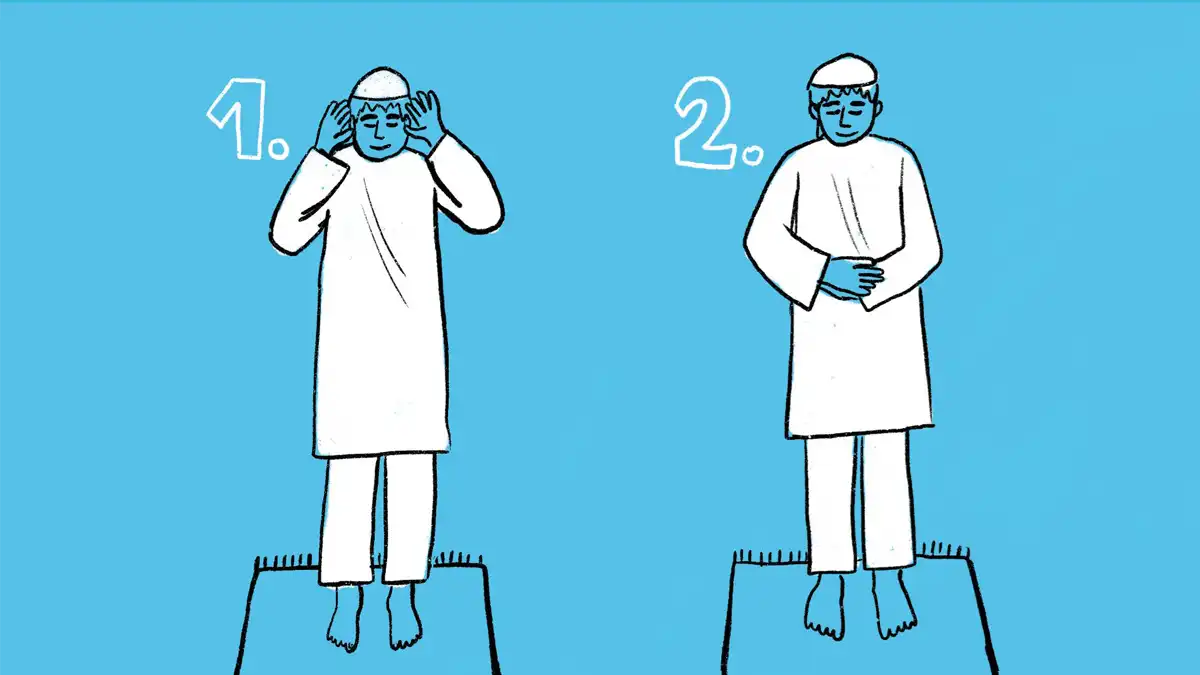Learn The Right 5 Prayer Method | Amazing Article

Islam views prayer as a form of worship in which believers praise and thank Allah, acknowledge His sovereignty, and pledge to follow and remember Him always. It is the foundation of a way of life built on obedience to the One who created us all.
Among the best acts of worship that a Muslim can engage in are the five pray. After having the true believe in God and His Messenger, doing them is the best deed. When the Prophet Muhammad (Pbuh) was asked what the best action was, he replied that it was offering the required prayers at the start of their respective eras.
When we talk to “Pray” we mean an act of worshipping God that follows a particular framework that God gave to Prophet Muhammad (Pbuh). From Prophet Adam through Prophet Muhammad (Pbut), the prophets commanded their followers to pray in accordance with God’s instructions.
The Right Prayer Method
One must organise his life around the pray since it is the second-most important Islamic principle after having the true belief in God and His Messenger. If a pray was needed while at work, it would be a serious sin to ignore it. A believer is still required to offer the pray when it is due, rather than purposefully skipping or delaying it, even if he is waiting in line at the airport or shopping at the mall and has no way to get home or to a mosque. This demonstrates the significance of the required pray. Priority is given to doing the required prayer on time over other optional tasks.
Each of the 5 prayers have different number of units (Rakaat) for each.
Fajr (Dawn Pray) is 2 units (Rakaat)
Dhor (Noon pray) is 4 units (Rakaat)
Asr (Afternoon pray) is 4 units (Rakaat)
Maghrib (Sunset pray) is 3 units (Rakaat)
Isha (Night pray) is 4 units (Rakaat)
Prayer Method : A unit (Raka’a) of prayer is comprised of steps 1 through 8 in the lesson for the “Full Prayer Mat” below.
Repeat steps 1 through 8 for each raka’a (unit) of pray.
The conclusion of the first two units (Raka’at) of pray is step nine.
If the prayer is only two units long, such as Fajr, proceed to steps 10 and 11 to finish it after finishing step 9.
If the prayer is four units long, repeat steps 1 through 8 twice, step 9, repeat for the following two units, and then continue on to steps 10 and 11 to finish the prayer.
If the prayer is three units, repeat steps 1 through 8 twice, step 9 once, and then steps 1 through 11 to finish.
Two suras (Chapters) from the Qur’an make up the first two units of pray (Raka’at), and just one sura makes up the third and fourth units (chapter). Sura (Chapter) 1 of the Qur’an, “Al Fatiha,” is the first sura (chapter) that is recited (The Opening).
Every single pray unit begins with the recitation of the al fatiha (the beginning). Al Fatiha (the introduction) and one of the shorter suras (chapters) of the Qur’an, such as suras (chapters) 112-114, should be recited during the first two units of prayer. After Al Fatiha, you are welcome to recite any of the suras (chapters) of the Qur’an, even the lengthy ones, but I advise starting with the shorter ones since they will be simpler to memorise.
First unit of prayer is equal to sura (chapter) 1 + sura (chapter) 112
Sura is the second unit (Raka’a) of pray (chapter) plus one sura (chapter) 113
Sura is the third unit (Raka’a) of pray (chapter) 1 only
In the first chapter of Sura, the fourth unit of pray
Shortened Prayer
You can say a condensed prayer until you memorise the entire pray.
Please be aware that the condensed prayer is NOT intended to replace the complete pray, but rather to be used temporarily while you are learning the full prayer by heart.
There is a two-part shortened prayer mat that you can print out and adhere together in the “Pray Mat” section below. While you are praying, place the printout in front of you so you can see it.
Additionally, a complete image of the prayer mat is provided; however, it has been divided into parts 1 and 2 for printing.
The complete prayer is also included in the pray mat section and is divided into parts 1 and 2.
Additionally, there is a prayer book that will help you put things in perspective and provide background information.
Finally, we advise you to watch the video below, which will walk you through the prayer step by step and provide background information on prayer in general.
We advise reading the booklet first, watching the video with the prayer mat open to help you visualise everything, and then saying the pray.
Memorization
We’ve discovered that repeating a verse 20 times before going on to the next verse is the most effective strategy for memorising Qur’anic verses. then 20 times the following verse. Then, combine the first and second verses ten times before moving on to the third verse and continuing.
As an illustration, the opening verse of Surah (chapter) Al Fatiha is “AL-HAMDU LILLAAHI RABBIL’AALAMEEN.”
20 times should be given to the first verse (just when memorising the Qur’an; not while praying).
“ARRAHMAANIR RAHEEM” is the second verse of the opening Surah (chapter) Al Fatiha.
20 times in the second verse.
After that, combine that with “AL-HAMDU LILLAAHI RABBIL’AALAMEEN, ARRAHMAANIR RAHEEM” that you just learned.
The first two verses should be repeated ten times before moving on to the third verse.
“MAALIKI YAWMIDEEN” is the third verse of Surah (sura (chapter)) Al Fatiha, which is the opening.
20 times in the third verse.
Combining the three phrases “AL-HAMDU LILLAAHI RABBIL’AALAMEEN, ARRAHMAANIR RAHEEM, MAALIKI YAWMIDEEN” that you just learned.
The first three verses should be repeated ten times in total. The fourth verse should then be repeated, and so on.
The secret to success is taking small steps and being patient.
You can Also Read :
- Amazing Top 7 Dry Fruits to Consume This Winter
- Shocking News About Google Play Services.
- Top 10 World’s Highest Mountains 2023.
- 5G in Pakistan still needs to make significant investments – GSMA.
For More









